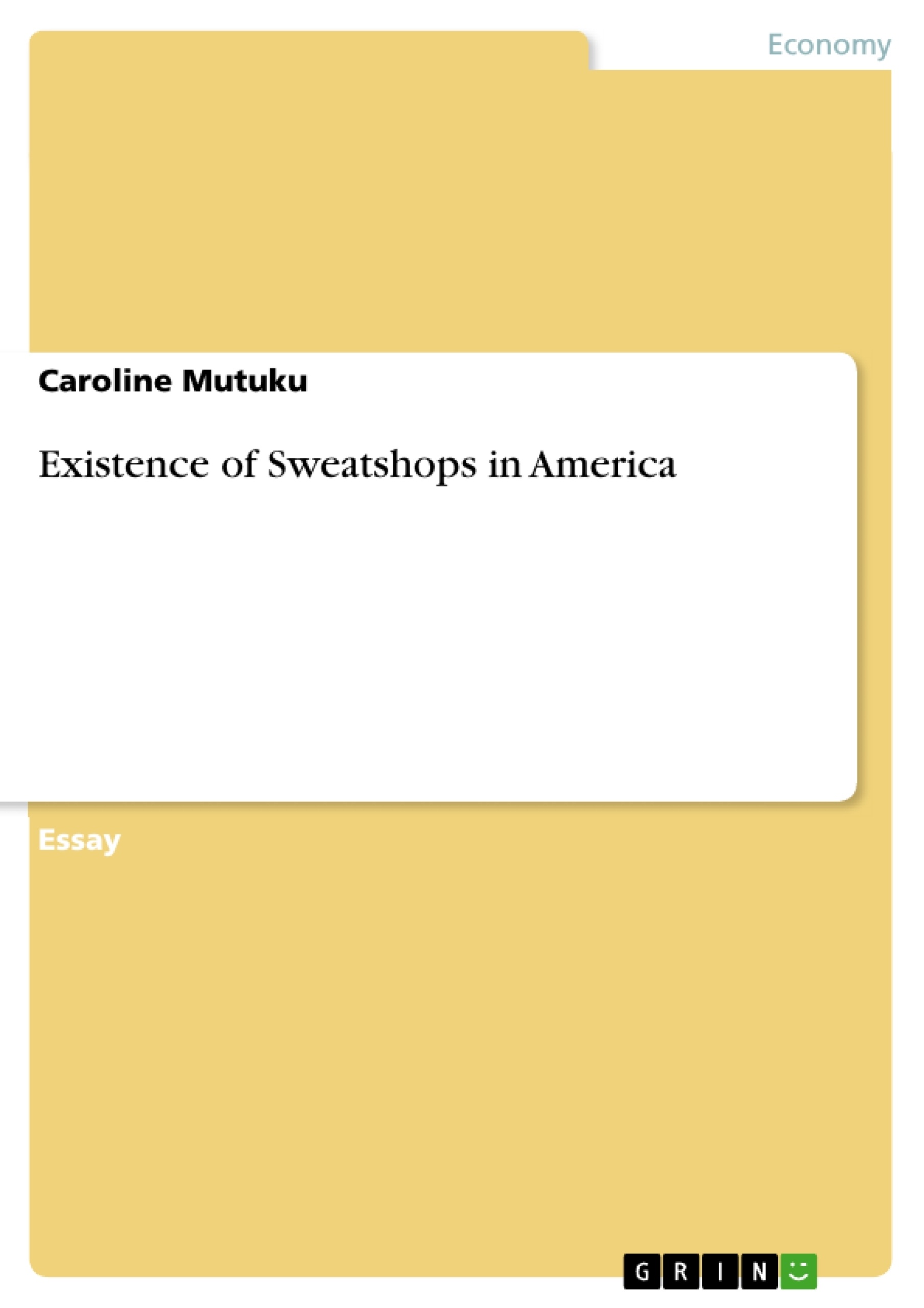Sweatshops are regarded to as low-wage industries, which are concerned with cloth production and flower processing and, they are found in the principal cities. These industries are usually characterized by workforce exploitation, unsafe working conditions and arbitrary discipline. In addition, sweatshops restrict their workers membership to labor unions. In regard to the United States Department of labor, sweatshops are those garment factories, which violate two or more labor laws.
In general, sweatshops are widespread in the world, especially in highly industrialized countries, which require intensive labor in production. However, it is worth noting that they are also found in some developing countries. Globally, most sweatshops are found in China, Latin America and Asia. In the United States, sweatshops have been identified to be scattered in some of the largest cities such as Chicago, New York and Los Angeles.
Historically, sweatshops are believed to have emerged during the Industrial Revolution, in which middlemen introduced a subcontracting system to earn profit through exploiting workers. There was a characteristic margin between the total amount of the contract and the net amount paid to workers. In this system, workers worked under unsanitary conditions for excessive hours and yet they received low wages: thus, the characteristic marginal returns were said to be ‘sweated’.
Recently, the issue of sweatshops, in the U.S emerged in 1995 when labor officials discovered slave-sweatshops in Los Angeles and Honduras, in which immigrants and young girls were forced to work for excessive hours, under unsanitary conditions. Consequently, Wal-Mart, Gap and Nike clothing industries were charged for using sweatshop labor. These incidences exposed the exploitation of workers, in the sweatshops leading an unprecedented outcry from the public. Therefore, this research will give a comprehensive overview of the sweatshops issue.
Table of Contents
- Introduction
- Existence of Sweatshops
- Sweatshops and Labor Laws Violation
- Nature of Sweatshops
- U.S. Companies Linked to Sweatshops
- Protecting American Workers
Objectives and Key Themes
This research provides a comprehensive overview of the sweatshop issue in the United States, examining its prevalence, nature, and connection to labor law violations. It aims to shed light on the exploitation of workers in these factories and advocate for stricter labor regulations to protect American workers.
- Prevalence of sweatshops in the United States
- Exploitation of workers in sweatshops, including low wages, unsafe working conditions, and denial of basic rights
- The role of corporations and subcontracting in perpetuating sweatshop labor
- The impact of free trade agreements on the rise of sweatshops
- The need for stricter labor laws and enforcement to protect American workers
Chapter Summaries
- Introduction: This chapter introduces the concept of sweatshops, defining them as low-wage industries characterized by worker exploitation, unsafe conditions, and restricted union membership. It highlights the historical origins of sweatshops during the Industrial Revolution and examines their resurgence in the 1990s, particularly within the garment industry.
- Existence of Sweatshops: This section explores the increasing presence of sweatshops in major U.S. cities, particularly in the garment industry. It discusses the factors contributing to their prevalence, such as low labor costs, weak labor protections, and the subcontracting system. The chapter also highlights the role of free trade agreements in facilitating the growth of sweatshops.
- Nature of Sweatshops: This chapter expands on the nature of sweatshops, demonstrating that they are not limited to the garment industry. It cites examples of sweatshop practices in other sectors, such as grocery stores and car washes, highlighting the pervasive nature of worker exploitation. The chapter emphasizes the lack of corporate responsibility in the subcontracting system, where manufacturers often distance themselves from the working conditions of their suppliers.
- U.S. Companies Linked to Sweatshops: This section examines the specific corporations linked to sweatshops in the United States. It identifies major retailers and brands known for their reliance on sweatshop labor, both domestically and internationally. The chapter also highlights the practices of some corporations to evade labor laws through independent monitors and misleading reporting.
- Protecting American Workers: This chapter focuses on the issue of labor law violations in U.S. sweatshops and the devastating consequences for workers. It highlights the prevalence of minimum wage violations, overtime abuse, employer retaliation, and other forms of exploitation. The chapter emphasizes the disproportionate impact on women and children, often subjected to unsafe conditions and forced labor.
Keywords
This text focuses on the issue of sweatshops in the United States, examining the prevalence of these low-wage factories, the exploitation of workers, and the role of corporate practices in perpetuating these conditions. Key themes include labor law violations, worker safety, free trade agreements, and the need for stricter regulations to protect American workers. The text also addresses the role of corporations and subcontractors in the supply chain and the impact of sweatshop labor on women and children.
- Quote paper
- Caroline Mutuku (Author), 2018, Existence of Sweatshops in America, Munich, GRIN Verlag, https://www.grin.com/document/428839




